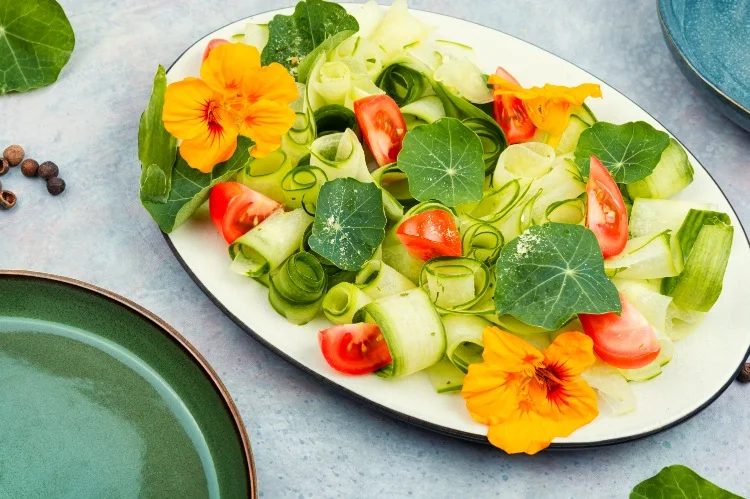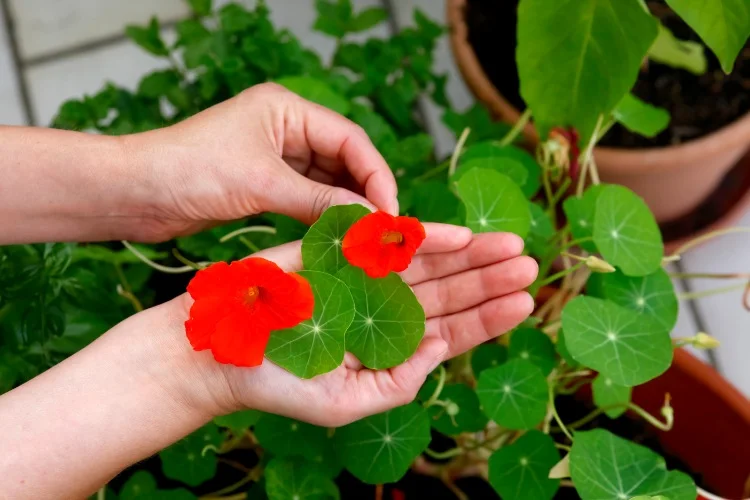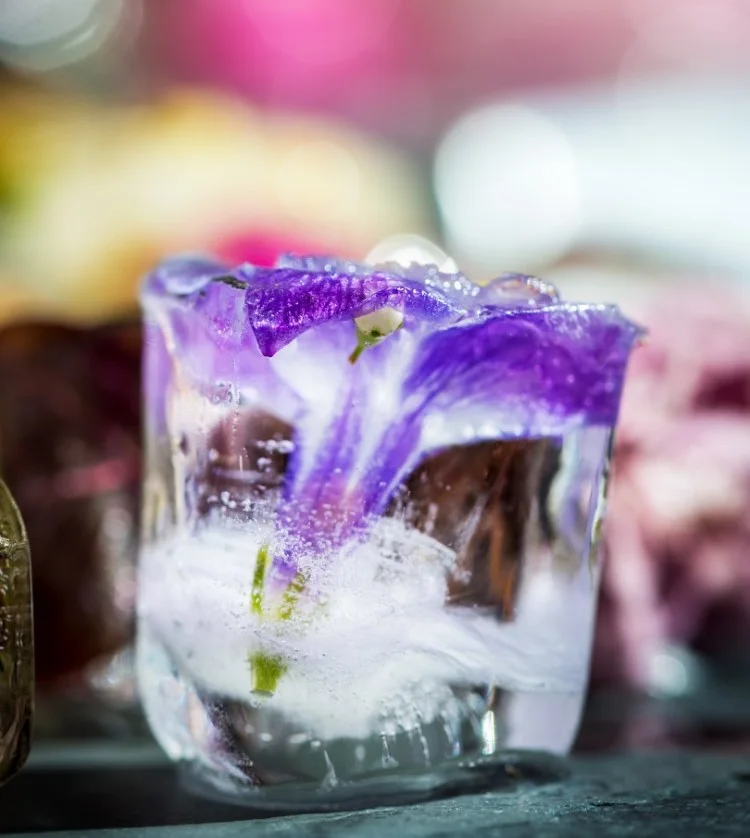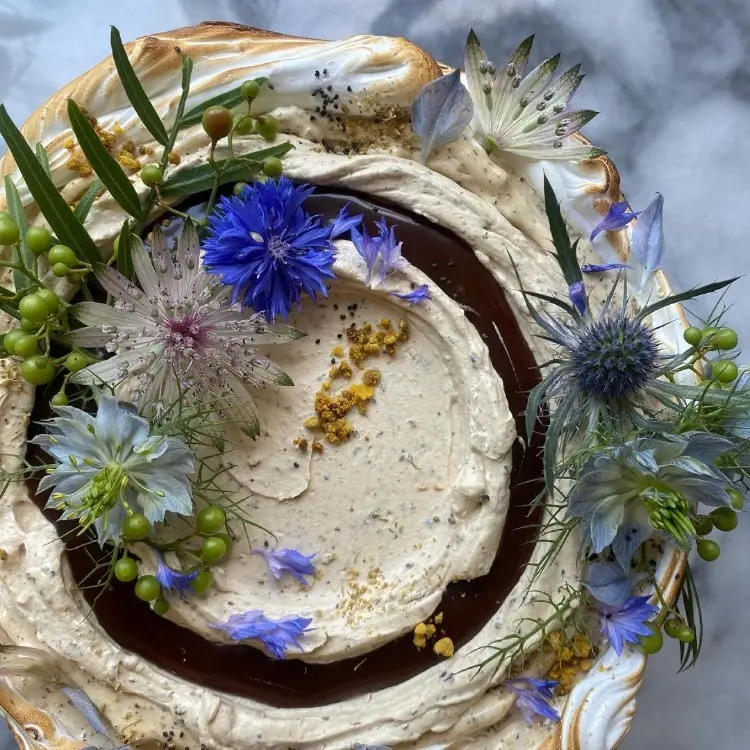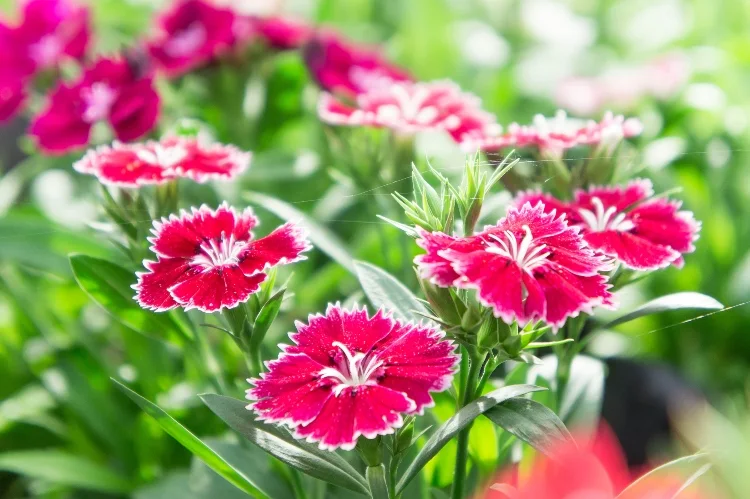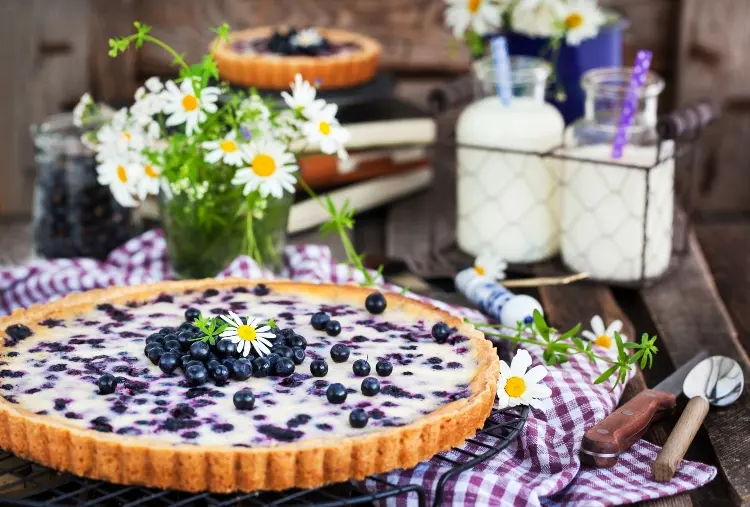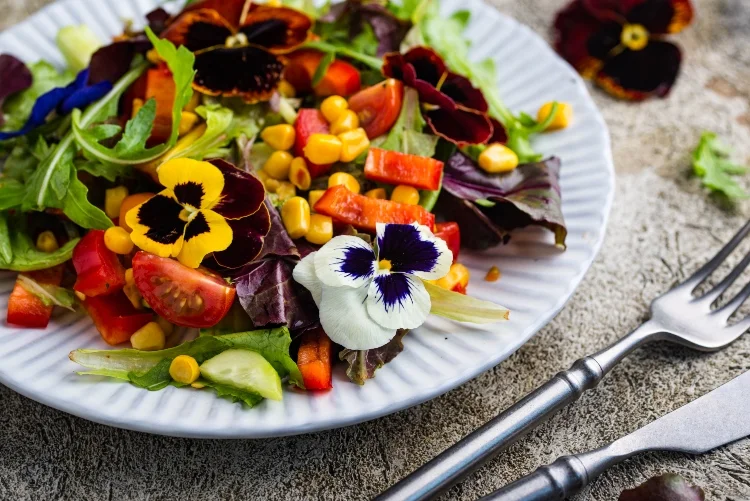Edible plants are true all-round talents. They bloom profusely and are a real eye-catcher in the container garden. But the flowers can do much more and decorate cakes and cupcakes, they can be added to salads and decorate delicious dishes.
Edible Plants: Nasturtiums for Salads
Nasturtiums are among the easiest plants on this list to care for. Not only do their flowers and leaves look good – they are also edible and are even used by professional chefs for the following purposes:
- For wrapping sushi rolls: Nasturtium leaves can replace nori sheets.
- When garnishing salads
- As a decoration for cocktails: the flowers float on the surface
Nasturtium blooms in numerous colors and the flowers stay fresh for a long time if you pick them right after opening. You can dry the leaves and use them as a spice.
Care tips: The plant prefers full sun – the western or southern windowsill is best. Compact varieties thrive better indoors and, with good care, are ready to harvest after 4 to 6 weeks. Important condition for the formation of flowers is a lean substrate. The more nutrients the exotic plant gets, the fewer flowers it will form. In addition, the perennial plant grows quickly and needs climbing support shortly after the first year.
Also read: Edible Flowers to Grow In Your Garden or Balcony: The TOP Varieties
Starflower for the Herb Garden in the Kitchen
Starflower, also known as borage, is one of the potted plants that can be easily cultivated at home. The plant is popular for its beautiful flowers and fresh taste. Both the flowers and the leaves are edible and can be used in many ways in the kitchen. For example, you can:
- Make your own ice cubes with borage flowers. To do this, simply fill the ice cube tray halfway with distilled water, place the flowers upside down and place them in the freezer. After a day, take out the mold, fill with water and freeze again.
- Season salads to taste. Goes well with cucumbers, blue cheese, lettuce, arugula and grilled chicken.
- Season mushroom sauce with borage.
Care tips: Occasional fertilization and regular watering guarantee blooms in spring. Good planting partners in the pot are herbs such as dill, parsley, basil and marigold.
Use Cornflower as a Cake Decoration
Cornflower is a perennial plant that, if cared for well, produces countless flowers from spring to fall. The flowers can be dried or used fresh. With cornflower you can:
- Season salads to taste.
- Prepare cocktail syrup.
- Make your own edible food coloring.
- Make “confetti” from the petals.
- Decorate cakes and tarts.
If you want to dry the flowers, hang them by their stems in a warm, dark and dry place.
Care tips: Cornflower prefers garden soil to conventional substrates. Good drainage is an absolute must. To improve soil permeability, you can work a handful of sand or clay shards into the soil. Regular watering is very important for the plant, this is the only way it can get through the winter well and survive heat waves in the summer. It does not need fertilizer even during the growing seasons.
Bearded Carnations for Desserts
The flowers of bearded carnation have a mild taste and are often used as a garnish for fruit salads, cakes, desserts or ice cream. You can even use them to decorate various cocktails.
Care tips: Bearded carnations prefer full sun and need regular watering. Good drainage is very important because the flowers cannot tolerate waterlogging. Most varieties are fast-growing and long-flowering.
Edible Plants: Chamomile
Chamomile is a herb, popular for its signature nutty flavor. The flowers are used in cooking as follows:
- For chamomile blossom syrup: Bring 5 oz/150 g of water to the boil, add 5 oz/150 g of sugar. Simmer the sugar syrup until it thickens. Then add about 1 oz/30g chamomile flowers and stir in about 1/3 citric acid. Let it cool and sweeten your afternoon coffee or tea.
- For chamomile lemonade.
- As a decoration for cookies, muffins, cakes and cakes.
Care tips: The flat-rooted plant can be easily cultivated in pots. However, real chamomile is an annual plant, so it is sown in spring and then takes around 2 weeks to germinate. If you pick the flowers regularly, you will promote the formation of new flowers. The flowers can be used fresh or dried. For this purpose, the flowers must be placed on baking paper immediately after harvesting and left to dry in a dry, well-ventilated and dark room for 10 to 14 days.
Bonus Tip: Candied Violet Flowers
Violets are probably the most popular of the edible flowers. They are easy to grow in pots and are extremely easy to care for. You can add fresh violet flowers to salads and dishes. They are also beautiful edible decoration for cakes and pies. However, the violets taste best candied. For this purpose, simply take dried flowers and dip them individually in heated sugar syrup. Then let cool and store in an airtight and dark place.
Also read: Easy Plants to Grow On a Balcony: Edible and Decorative Varieties
Beware of Unhealthy Squash! How Can You Tell If a Squash Is Poisonous?

